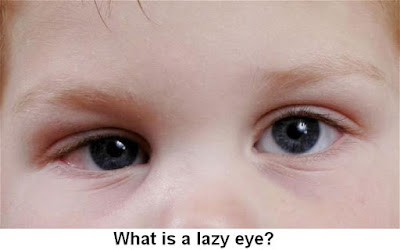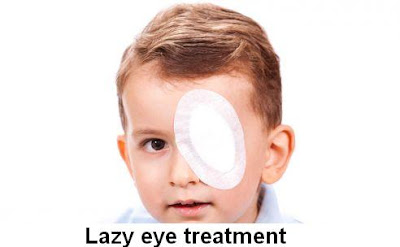What is a lazy eye?
A lazy eye does not look good, while there is nothing wrong with the eye. For one reason or another, vision has not well developed in the early childhood.
Usually only one eye lazy. Occasionally two eyes simultaneously lazy.
A child with a lazy eye may have trouble seeing depth. Hence it is clumsy. The child falls and stumbles more often. Probably the child has difficulty with targeted actions, for example by pouring something or catch a ball.
The treatment of lazy eye is only in the early childhood success. After eight years of treatment no longer makes sense.
Is your child at greater risk of lazy eye, then it is wise to go at a very young age to an ophthalmologist. Your child is at increased risk as strabismus, lazy eyes and prevent strong lenses in your family.
Another word for lazy eye is amblyopia.
What causes a lazy eye?
A lazy eye can have several causes:
- Strabismus. The image of the deviating eye is turned off in the brains to avoid double vision. Eventually, the child looks only with the eye.
- A strength deviation of the eye. The image that makes this eye is blurred. This blurry image in the brains get less attention and is ousted. Usually there is nothing to see from the outside to the eye. Thus, this form of lazy eye is difficult to detect. The deviation can only be determined by checking the visual acuity.
- Turbidity in parts of the eye that are normally bright. This is for instance so in cataract.
Upon the occurrence of a lazy eye genetic predisposition also plays a role.
Lazy eye diagnosis
The diagnosis of lazy eye is difficult to assess. A child often does not notice that it has a good and a bad eye. If the child does not look clear-eyed, then the parents often do not see that there's something about the eyes.
The doctor must find out if one eye sees clearly less than the other. In babies, it is difficult. The ophthalmologist estimates therefore often visual acuity. She does so: she looks at how well a baby follows a light or an object with one eye while the other eye is covered. A lazy eye following the bad moves. Sometimes protests or cries a baby even if the good eye is covered.
From the pre-school age, the physician may measure the visual acuity with more accurate tests. The most commonly used are recognition tests. The child must recognize a symbol from a certain distance. In toddlers that figures among children E-hooks or C-rings, still older children letters.
Doctors suspect the child with one or both eyes look worse than they are trying to find the cause. For this, she instills mydriatic drops in the eye of your child. The ophthalmologist can then determine the refractive condition of the eye. It also looks at the clarity of the cornea and the lens, and the condition of the retina.
The mydriatic drops your child may be sensitive to light and it looks blurry. After a while, the pupils shrink back and see the child again as before.
How to get rid of a lazy eye?
First, your child gets a treatment for the cause of lazy eye. Thus, for example, a pair of glasses in order to correct a deviation strength. Or treatment of eye diseases (eg cataracts).
Your child will receive a few hours a day a bandage on the eye. Your child must use the lazy eye to see. This takes a few weeks to months. The older the child is, and the worse it looks, the longer the eye should be taped. Therefore, it is important to treat a lazy eye at a young age.
If treatment with covering the good eye fails, then the child gets any mydriatic drops in the eye. The eye can not see up close. The child must use the lazy eye to look close. For the same reason the ophthalmologist prescribes sometimes special glasses or contact lenses.
For successful treatment for lazy eye, you as a parent, the most important thing. You must ensure that your child's patch carries and that your child can last.
Sometimes a child is too old to start yet to a treatment. Doctors assume that treatment after the eighth year of life no longer helps. Even if the doctor has treated the cause of lazy eye, the child continues to look so bad. Seeing center in the brains do not develop further.


